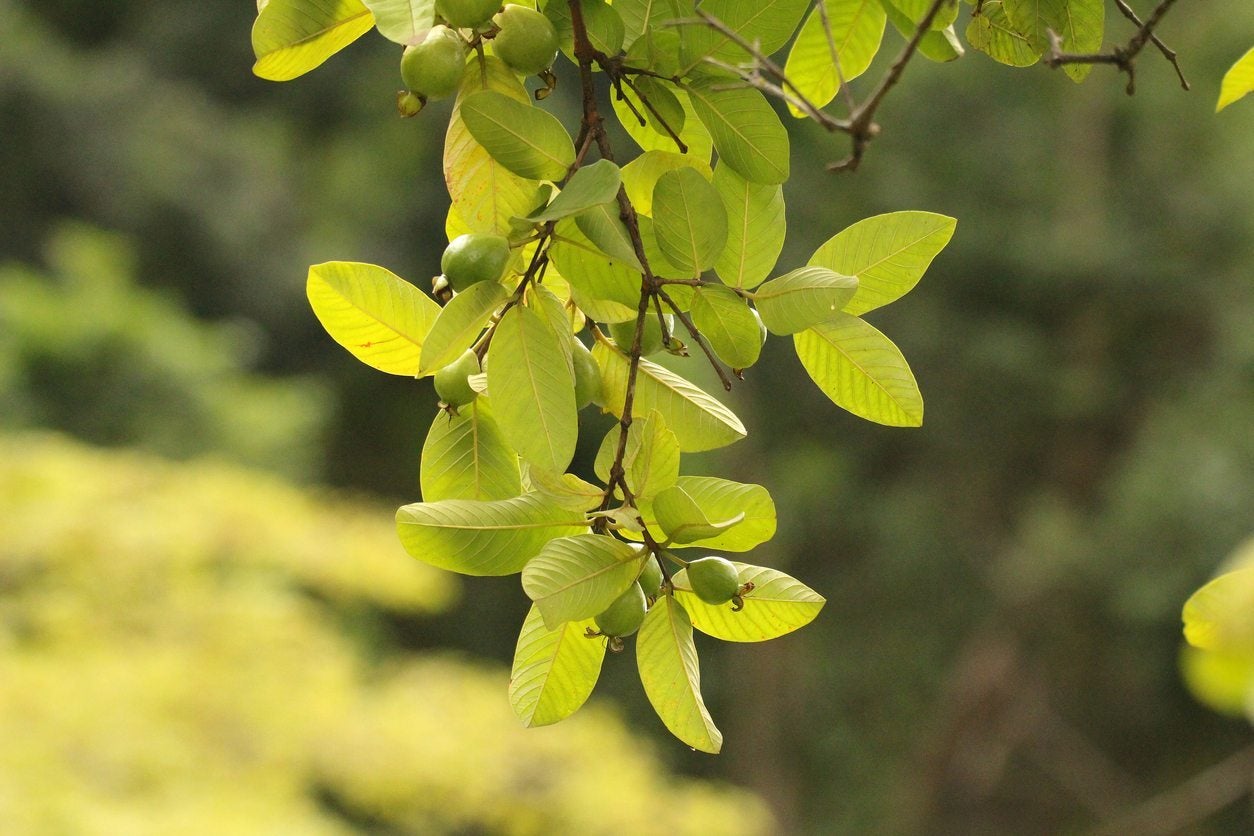Growing Guava For Tea: How to Harvest Guava Tree Leaves

Guava fruit isn’t just delicious, it may have beneficial medicinal effects. The fruit grows throughout Brazil and Mexico where, for centuries, the indigenous people have been picking guava tree leaves for tea. This traditional medicine has been used to treat everything from nausea to sore throats. Interested in growing guava for tea and learn how to harvest guava tree leaves? Read on for more information about harvesting guava leaves for tea.
About Guava Leaf Tea
As mentioned, indigenous people have been harvesting guava leaves for medicinal tea for many years. Today, guava has found its way into modern medicines, including weight loss products and anti-diarrhea formulas. Researchers are even studying its medicinal properties with regards to treating diabetes. Guava leaves are also a rich source of antioxidants, you know those things making the news that protect your cells by scavenging damaging free radicals. Brazilian scientists have tested an extract from guava leaves that conclusively fights Staphylococcus aureus (Staph) and Salmonella. All very intriguing, but always consult your doctor or professional herbalist before trying any sort of medicinal plant.
How to Harvest Guava Tree Leaves
If you are growing a guava tree to harvest leaves for tea, be sure not to use any chemicals on the tree. Anything you put on the tree; you will end up ingesting. Guava leaves are said to have the highest amount of antioxidants from spring to summer. When picking guava leaves for tea, cut organically grown, unblemished guava leaves in the afternoon on a warm day after the sun has dried any dew. Use sharp pruning shears to harvest medium sized leaves when the tree is just beginning to form buds. Wash the leaves in cool water and shake off the excess water. Place the leaves in a single layer on a drying screen or tray and allow them to air dry, turning them every day. Drying in this manner will take three to four weeks depending upon the humidity. Alternatively, tie several leaf stems together with twine and put them in a paper sack with the stem ends protruding from the bag end. Close the bag around the leaves with twine or a rubber band. Hang the bag of leaves in a warm, dark, dry area. When the leaves are dry and brittle, store them in airtight containers at a low temperature with low humidity and away from sunlight. Use the dried guava tea leaves within one year.
Sign up for the Gardening Know How newsletter today and receive a free copy of our e-book "How to Grow Delicious Tomatoes".

Amy Grant has been gardening for 30 years and writing for 15. A professional chef and caterer, Amy's area of expertise is culinary gardening.
